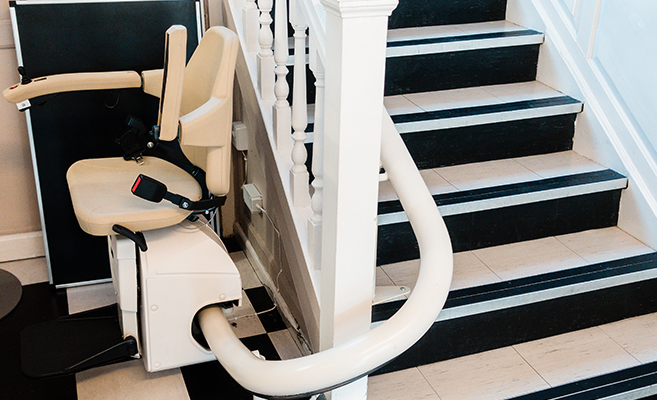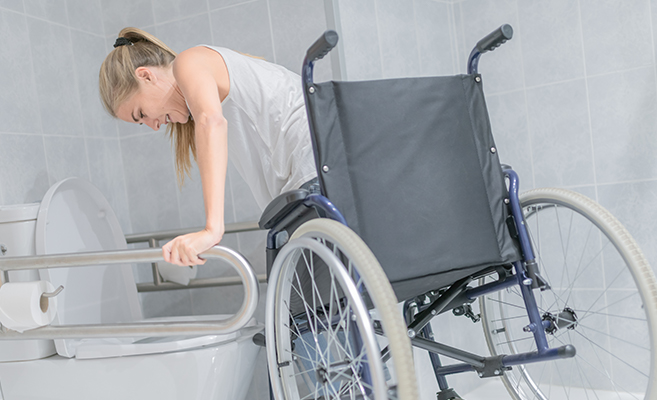Prevent dangerous living conditions that lead to slip and falls and other avoidable accidents for elderly residents. Knowing how aging-in-place remodeling can facilitate your well-being and safety will help you make necessary modifications to your home before a severe accident can occur.
sallywheatinteriors.com gathered essential information and tips on aging-in-place remodeling that allow the elderly to enjoy the freedom and comforts of their home for a significantly longer time.
1. Put Grab Bars in Bathrooms
These heavy bars can help prevent falls on slippery tubs, shower stalls, floors, and episodes from standing or sitting too rapidly. You can typically find grab bars at home improvement stores for $30 to $50.
2. Widen doorways
If your doorways are narrower than 32 inches, you may have to expand them to accommodate a wheelchair, wide walker, or other mobility assistance device. A professional contractor would typically need to replace the existing frame and add insulation, drywall, tile, or paint. The job might also require moving and rewiring light switches and outlets.
The final cost to widen a doorway will vary, especially if electrical work is needed. Expect to pay anywhere from $300 to $700 per doorway.
3. Add a Wheelchair Ramp
Even if no one in the home has been confined to or has an immediate need for a wheelchair, a ramp will eliminate the need to climb a set of stairs to enter and exit the home. The average cost to build a wheelchair ramp is about $1,500, and this cost may vary depending on the material used and its availability.
4. Replace Flooring with Slip-Resistant Material
Vinyl and linoleum flooring can provide more traction than stone floors, and the softer material can be more forgiving when someone slips, trips, and falls. Bamboo and cork flooring are also popular choices, though much more expensive.
Expect to spend somewhere in the vicinity of $4 to $6 per square foot to buy and install vinyl or linoleum floors.
If your budget doesn’t allow you to replace or resurface a floor right away, you can at least replace or repair any damaged, raised, or curled areas. Uneven tiles and other flooring defects are severe trip-and-fall hazards for anyone at any age.
5. Install a Chair Lift or Elevator

If a home has more than one level, consider an elevator or chair lift that attaches to the extent of the stairs. These can help seniors prevent severe accidents and allow them to effortlessly move between floors. Chair lift equipment and installation typically start around $6,000, installing an elevator will cost around $20,000 and up.
The National Association of Home Builders has a Certified Aging-in-Place Specialist (CAPS) designation for contractors who help homeowners remodel to accommodate elderly loved ones. You can contact a CAPS professional to get advice and find qualified contractors.
Note: Read more about the CAPS designation at nahb.org/education-and-events/education/designations/Certified-Aging-in-Place-Specialist-CAPS
6. Adjust Kitchen Countertops

Regular countertops rise about 34 inches from the floor. Installing cabinets and countertops at a reduced 30 inches makes it easier for someone in a wheelchair or scooter to reach and prepare their food. The cost varies depending on kitchen size and dimensions, but to remodel about 30 linear feet of space, you should budget at least $6,000.
Home Renovations for Seniors
While some home renovations for seniors may seem obvious, others are not so clear-cut. In many cases, some of the following remodeling ideas may seem more appropriate for young children but are, in fact, designed to help and facilitate an aging person’s comfort and ease of living:
Faucets – Trade traditional faucets for models with blade handles or motion sensor controls
Door Knobs – Replace standard door knobs with levers
Doors and Floors – Eliminate stairs and level changes wherever possible. Widen all hallways to at least 36 inches, eliminate long hallways when possible, and make most, all doorways and room openings a minimum of 36 inches wide.
Bathroom – One way to assure that a bathroom is functional for small children and someone in a wheelchair is to lower one vanity sink and eliminate its cabinet, replacing the standard vanity with a lowered, thinner vanity shelf.
Toilets – Instal grab bars beside or in front of the toilet and consider installing automatic/sensor flushing mechanisms.
Hot Water Temperature – Install anti-scalding temperature controls for the water heating unit or directly in showers.
Switches and Plugs – Lower wall switches and raise receptacles throughout the home, so they are easier to reach. Consider installing illuminated plug and switch plates where needed for added safety and convenience.
Cooking – Lower the stove top, so burners are more easily accessible from a wheelchair.
Cabinetry – Store dishes and cookware in “below-counter” drawers and eliminate overhead cabinets. Install pull-out shelves, drawers, and corner lazy-Susans.
Aging-in-Place Remodeling
In this article, you discovered information and highly recommended tips for aging-in-place remodeling ideas.
Building or remodeling a home to facilitate a person’s aging will help them maintain their safety, independence, pride, and security well beyond those in homes without such adjustments.
Ignoring the need for aging-in-place renovations can result in severe or life-threatening accidents that could be completely avoided.
Sources:
nia.nih.gov/health/aging-place-growing-older-home
huduser.gov/portal/periodicals/em/fall13/highlight1.html
aarp.org/livable-communities/info-2014/using-an-OT-or-CAPS.html



